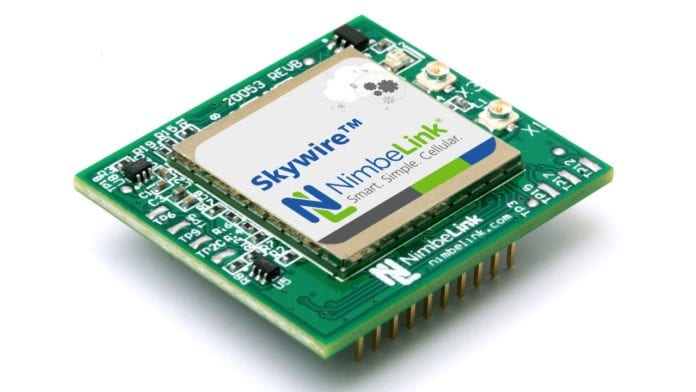Verizon Wireless is moving closer to connecting meters and asset trackers directly to its LTE network. Modem maker NimbeLink said it has demonstrated a live Category M1 connection on the Verizon Wireless LTE network. The company connected its device directly to Verizon’s ThingSpace platform at this week’s IoT Evolution Expo in Fort Lauderdale, Florida.
“It’s an industry first,” said NimbeLink’s Brandon Hart, director of technical business development. “People like to talk about how M1 is coming, but we were actually able to demonstrate it working.”
LTE Category M1, or Cat M1 for short, is the next generation of internet of things connectivity for wireless carriers. Cat M1 modules use a maximum of 1.4 megahertz of bandwidth and both uplink and downlink speeds are capped at 1 megabit per second. It is expected to improve the economics of IoT for use cases like smart energy meters, industrial IoT sensors, asset trackers, smart city controllers and consumer wearables. Devices that now use Wi-Fi or Bluetooth to connect to LTE routers or gateways are expected to connect to the LTE network directly when they are equipped with Cat M1 modems.
NimbeLink is one of a handful of Cat M1 modem makers. Like several of its competitors, NimbeLink uses Sequans’ Cat M1 chip, which Verizon Wireless certified last month for its network.
“We are one of three companies who have a piece of hardware that is end-device certified for use on the Verizon network,” said Hart. “All three of us kind of went through the testing and the field trials at the exact same time with Verizon and with the folks from Nokia and Ericsson … but to my knowledge none of the other players … have actually been able to show it connected and working in the real world.”
Hart said the other two module makers that Verizon Wireless certified are Link Labs and Encore Networks.
NimbeLink packages the Cat M1 modem into an adapter board and markets the board to developers who want to connect devices to the internet using cellular. The adapter boards can interface with popular development boards including Arduino, Raspberry Pi, BeagleBone Black, STMicro Nucleo, Renesas boards and NXP Freedom Boards. The demonstration on the Verizon Wireless network used the Texas Instruments BeagleBone Black development board.
Follow me on Twitter.

